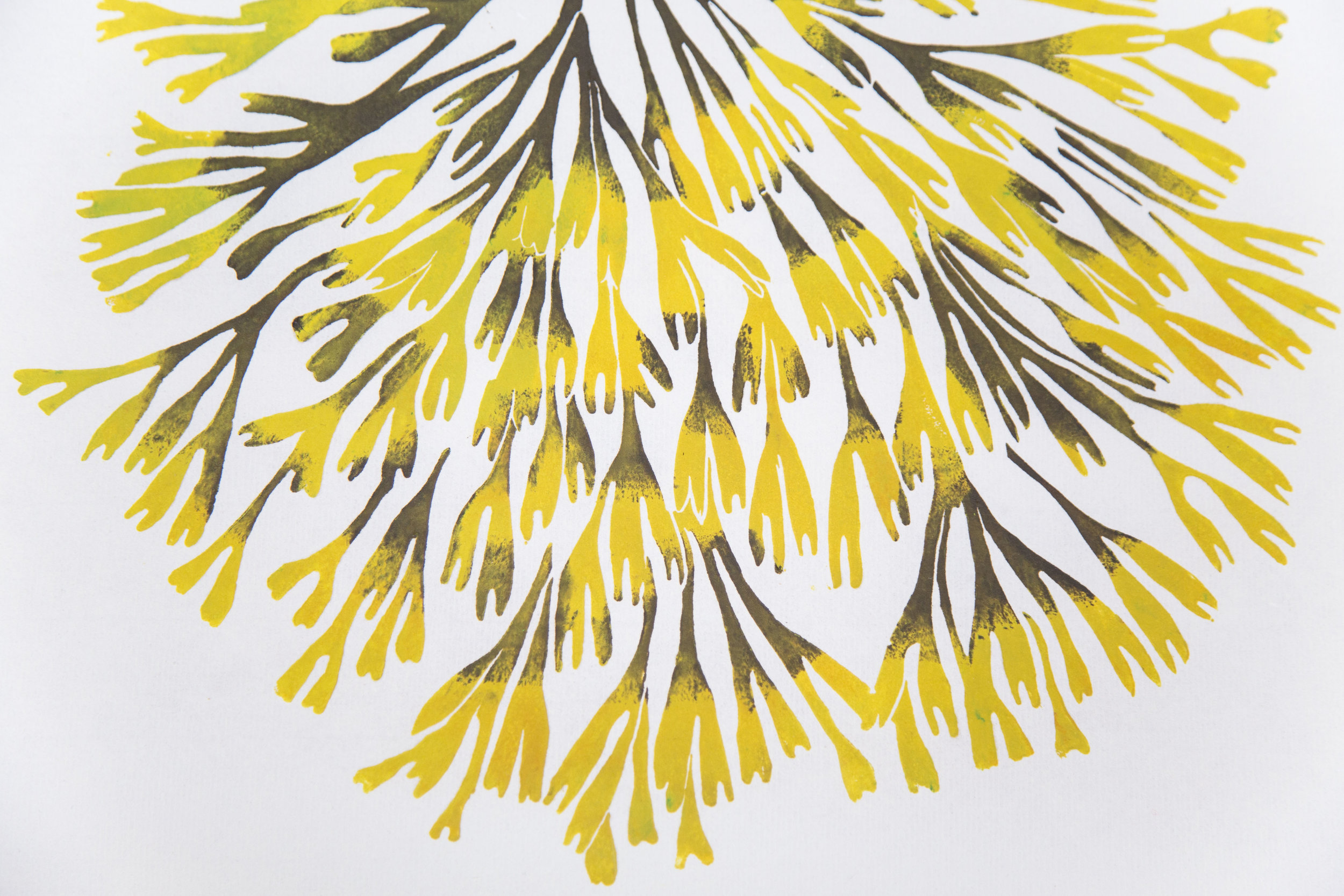Channelled Wrack Print.



Channelled Wrack Print.
SUPERFOLK SAYS:
“Bring the sea home; a collection of botanical prints inspired by clear bright mornings seaweed foraging in the ice-cold waters of the Atlantic. Hang as a set or make a single bold statement.”
Jo Anne
ABOUT THIS PRINT:
An original design by Superfolk. Designed and made by Superfolk in the west of Ireland.
This is a handmade print printed on handmade washi (Japanese paper). Strong, warm bold colours and shapes sit atop a delicate, partially translucent paper. The print is from a hand-cut lino block. Blocks are inked up by hand and lead to a unique colour variation in each print. Each print block is hand-printed onto a 50 gsm long-fibred handmade Japanese washi paper from Awagami Factory in Tokushima, Japan, where they have been making washi papers for eight generations.
DETAILS:
Materials: Water-based inks on a 50 gsm handmade Japanese washi paper with a deckled edge.
Size: 52 x 43cm. Fits our Medium Hanging Frame.
Colour Range: Yellow Ochre and Raw Umber with flashes of Cadium red.
Hand-signed and dated by the printmaker.
Each print is made by hand in our studio on the west coast of Ireland.
Ink colour tone variations are unique to each print.
As featured in ‘Wild Sea’, Princeton Architectural Press, first published Spring 2018.
Watch the making of our Seaweed prints here The making of a Dillisk print.
Learning to seaweed forage? Read our beginners guide here: GUIDE TO: Seaweed Foraging — Superfolk
Channelled Wrack (Pelvetia Canaliculata)
Common names in Ireland including Dulamán, Caisíneach and Cow-tang, The smallest of the ‘wracks’, it 10-15cm at maximum length. Find it growing on the tops of rocks in the upper shore and splash zones. Spotting Channelled Wrack marks the location of the full reach of the high tide. Channels or gutters on the fronds hold water allowing it to survive long periods without water cover. As Spring turns into Summer Channelled Wrack changes from a dark brown to olive to mustard yellow. In Summer its forked fronds open into fruiting tips. It is one of the most accessible as well as versatile and tasty of the Seaweeds. It combines well with sweet ingredients; try cooking in apple juice and add soy. Strong similarity to Japanese Hijiki and can ack as a substitute in recipes. Best collected early in the year when plants are young and tender.










